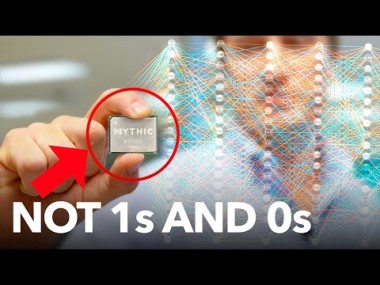4500 Fab Jobs Could Go Unfilled in U.S. by 2030 (spectrum.ieee.org)

This magazine is from a federated server and may be incomplete. Browse more on the original instance.





As formal verification becomes more common in the industry, design complexity continues to be a challenge. Article argues that this is a byproduct of design-centric approach (optimize area, power, speed) without considering verifiability. A verification-centric approach driven by polynomial formal verification analysis can...
One way to help alleviate the effects of the talent shortage is changing how semiconductors are designed so that organizations can achieve more with their existing workforce. This requires moving away from project-centric design and transitioning to an IP-centric design methodology....
So how can universities train students for a continuous and rapidly changing technology? This is especially difficult because it involves both software and hardware, and more domain-specific and increasingly heterogeneous architectures. And regardless of whether these devices are tethered to a battery or plugged into a socket,...


Engineers in Princeton managed to train GPT4 and extend AutoSVA to generate SVA (systemverilog assertions) from buggy RTL and functionality description. SVA is widely used to verify digital design for ASIC and FPGAs. AutoSVA2, which extends open-source AutoSVA, improves the flow to generate SVA from English description. LLM was...

One of the biggest shortcomings of silicon is that it can only be made so thin because its material properties are fundamentally limited to three dimensions [3D]. For this reason, two-dimensional [2D] semiconductors—so thin as to have almost no height—have become an object of interest to scientists, engineers and...

Compared with traditional monolithic devices, the design and manufacturing process for chiplets is significantly different. The scrap costs associated with manufacturing traditional monolithic semiconductor devices is basically linear, including single chip cost, packaging, and assembly costs....
Many volume applications use FPGA because they need in-field reconfigurability (changing standards, changing algorithms, etc) but they want to improve their system’s competitiveness (power, size, cost). FPGAs are bulky, expensive and power hungry. Integrating eFPGA can greatly improve the economics while maintaining full...

semiengineering.com/challenges-in-ramping-new-man…...

The digital RAKs provide Arm Neoverse V2 designers with several key benefits. For example, the Cadence Cerebrus AI capabilities automate and scale digital chip design, delivering better PPA and improving designer productivity. Cadence iSpatial technology provides an integrated and predictable implementation flow for the faster...

cross-posted from: lemm.ee/post/4443753...


The German Federal Ministry of Education and Research announces to fund the development of an open-source chip design ecosystem. This includes also design software.
Diverse talks about chip design with open-source CAD tools open-source hardware (FPGA, ASIC)


